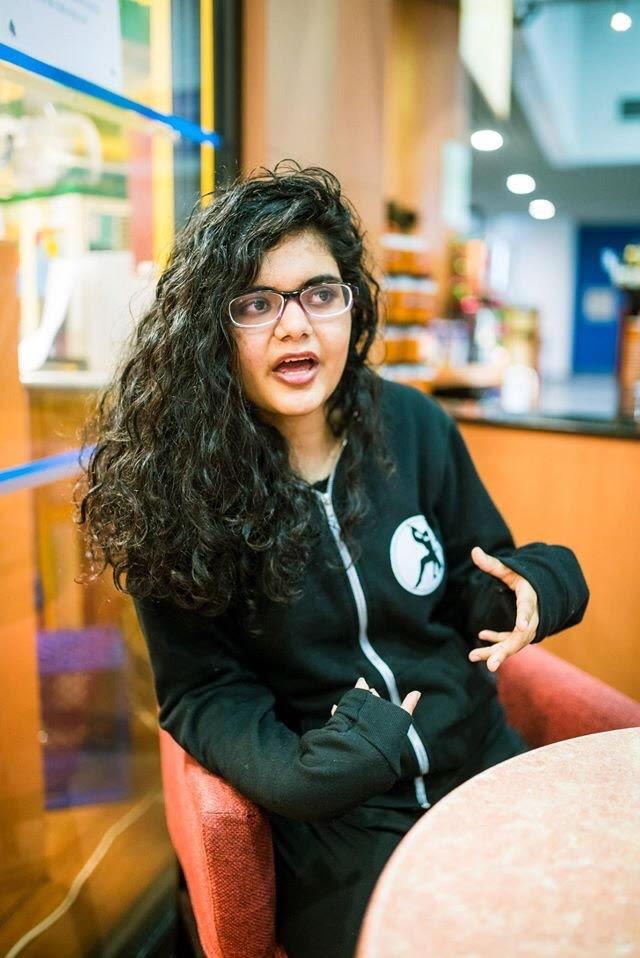Currently working on personalization and optimization models, this New York University alumnus has always strived to work on projects that have a large-scale user impact and touch people’s lives.
Chaturvedi cites users being the most integral element of all her studies. One of her novel works has been on developing a chatbot that aimed at improving tourism at Governor’s Island. The chatbot bestowed tourists with great virtual tours and cinematic displays of the island’s history. This designed chatbot was presented at the Library of Congress as well.
A Passion Catered to Early in Life
Chaturvedi was always a zealous science and mathematics learner from her junior school days. Solving math problems served her, in her words, as “a route to escapism from all her issues”. And although eighth grade marked the beginning of her coding rendezvous, it was the CSIR Programme for Youth for Leadership in Science (CPYLS) that excellently chiseled her path. There, with relentless exposure to practical applications of science and math, she learned and developed analytical skills that curated her interest in applied science.
Later, upon getting invited to the UNESCO-patronage granted London International Youth Science Forum (LIYSF), in 2013, bestowed her with an enigmatic experience of getting to interact with a sea of aspiring scientists from all across the globe.
Her undergraduate study at Hong Kong University of Science and Technology (HKUST), in Environmental Technology and Computer Science, supported her to learn to connect sparse dots among different areas and employ technical skills for applicability. Speaking of the practicality and flexibility of the degree, Chaturvedi explains that it allowed her to “explore pressing societal and environmental issues”.
During her course, Chaturvedi undertook several research projects. From her summer research at IIT Bombay working on US Environmental Protection Agency database (USEPA) to immersing herself in the functionings of several environmental agencies like Business Environment Council (BEC), World Resources Institute (WRI), and Carbon Disclosure Project (CDP) – she operated on a diverse assortment of datasets which granted her an in-depth perspective on applying her computer science skills.
In her final year, she took up courses that emphasized on data science and AI. “Machine learning coding brings me a lot of peace and is like a meditation session for me”, Chaturvedi asserts. She later pursued her master’s degree in Urban Data Science from New York University.
Her Process of Ideation & the Challenges Leapt
Chaturvedi has always been enthusiastic about researching. It was during her Havas Fellowship and NYC Media Labs – Verizon Startup Bootcamp Fellowship that her interest in ideation sessions, in particular, was instilled resolutely. She is passionate about how her data science and machine learning skills can be woven to assist and aid customers and society.
Taking up a course on Human-Computer Interaction in her exchange program at the University of New South Wales, she employed a user-centered design (UCD) process – a process through which she fathomed that user perspective is paramount. Since then, she bestows prominent attention to the user journey and how they will be impacted. Chaturvedi unraveled how user data can lead to the creation of effective systems for generating positive influences.
Her process initiates with the selection of a problem that Chaturvedi encounters in her own life. She digs in to unveil the existing solutions and progress made in the R&D so far. A critical analysis of her own skillset follows with the examination of the data available. She repeatedly questions herself on her biases and an ethical standpoint, leading to efficient, nondiscriminatory results. She also refers to the NASA Task Load Index (NASA TLX) assessment tool for measuring the perceived workload of a system by asking users to rate the efforts and frustration experienced during the experiment.
However, the biggest challenge that Chaturvedi cites facing as a data scientist comes with the possession of a dataset. The labeling of the dataset was repeatedly one of the most time-taking processes which, ultimately, slowed down her many research works. The quality of the data available, too, affected the performance of her models. Furthermore, storing and maintaining an enormous dataset and taking care of data privacy only add more complexities to the scope of study.
Reimagining the Future with Data Science
The COVID-19 pandemic disturbed the functioning of most sectors, but Isha differs and claims a boost in data science. “The potential of data science is huge, and some of it has been seen in the pandemic, particularly healthcare”, she states. She mentions automation and robotics as the leading examples. Natural Language Understanding and Dialog Based Systems are receiving massive importance, precisely because of the role they played in the COVID-19 research challenge on Kaggle last year. She herself has a recently filed patent related to natural language understanding and reinforcement learning.
She, moreover, affirms the development of extremely interesting applications of computer vision like detection of masks on people’s faces, the six-foot distance among people, and the like.
Chaturvedi’s prowess in data science and machine language, coupled with her intention of keeping people at the heart of all her endeavors, serves her in forging meaningful, powerful relationships.
This is a Contributor Post. Opinions expressed here are opinions of the Contributor. Influencive does not endorse or review brands mentioned; does not and cannot investigate relationships with brands, products, and people mentioned and is up to the Contributor to disclose. Contributors, amongst other accounts and articles may be professional fee-based.

